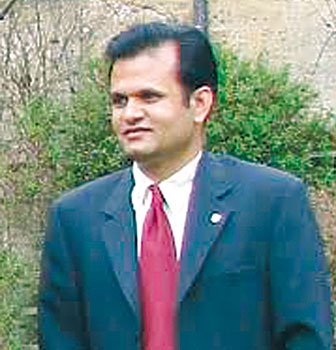The Astana Times spoke with Siddharth Saxena, chairperson of the Cambridge Central Asia Forum, Director of Cambridge-Kazakhstan Centre and Honorary Secretary of the Committee for Central and Inner Asia, to get his views on the prospects for renewable energy development in Kazakhstan and the world and the potential of EXPO 2017 to stimulate this development.
 This year, two sessions of the Astana Economic Forum were devoted to the theme of the international specialised exhibition EXPO 2017. In particular, the opportunities and challenges of the transition to a sustainable energy future were discussed, as well as issues arising from the transition to a green economy. What challenges and opportunities arise for a government during the transition to a green economy?
This year, two sessions of the Astana Economic Forum were devoted to the theme of the international specialised exhibition EXPO 2017. In particular, the opportunities and challenges of the transition to a sustainable energy future were discussed, as well as issues arising from the transition to a green economy. What challenges and opportunities arise for a government during the transition to a green economy?
First of all, Kazakhstan and the team put together by the president to win the expo against great international competition have to be congratulated. They have shown that Kazakhstan is one of the leading emerging forces in the world and a great consensus of the world community has democratically voted in favour of Kazakhstan. In some way, we at the Cambridge Central Asia Forum feel very proud to have supported the Kazakhstan bid from the very beginning.
The key opportunity here is that EXPO 2017 offers Kazakhstan not only a chance to show the world that it can become a leading green economy, but that it can offer green solutions for the globe. This also resonates with your president’s vision of a G-Global platform.
The challenge here is to turn Kazakhstan from a resource-based economy to an intellectual property power. This is where the role of my institution, the University of Cambridge, becomes crucial.
The theme of EXPO 2017 is Future Energy. What do you think sustainable future energy means? How relevant is this theme to the world?
Sustainable energy is the most relevant theme for the world at large and Kazakhstan, through EXPO 2017, is showing great leadership in highlighting this. Sustainable energy is not a simple thing; it means different things to different countries. In some places, it means electricity generated from non-petrochemical sources, while in other places it relates to the food supply, so people can live and work in the fields. How we apply correct supply-chain principles will decide the sustainability of energy in any given part of the world. Kazakhstan, though, is uniquely placed to take the global centre stage, whether we’re talking about oil, wheat or uranium! My centre in Cambridge is working daily to deliver solutions in all of these spheres.
 How will our lives change in the future, taking into account the energy of the future?
How will our lives change in the future, taking into account the energy of the future?
How we eat and how we breathe, how we live or work are all intrinsically linked to how we consume energy, so the future of humankind is in the hands of the energy of the future. If we cannot find more efficient ways of living – in other words, sustainable ways of transport, cooking and living – then, like the dinosaurs, we might disappear altogether, either due to exhaustion of energy resources or through climate change and catastrophes ranging from acid rain to apocalyptic floods.
Green technologies require large investments. Will such businesses be profitable and what benefits can they bring?
Based on fundamental advances in the understanding of electronic materials, much of 20th century materials science was driven by miniaturisation and integration in the electronics industry, to the current generation of nanometre scale devices. The achievements of this industry have brought unprecedented advances to society and well-being and no doubt there is much further to go; note that this progress is founded on investments and studies in the fundamentals of physics from more than 50 years ago. Nevertheless, the defining challenges for the 21st century will lie in the discovery in science and deployment through engineering of technologies that can deliver the scale needed to make an impact on the sustainability agenda. Thus, the big developments in nanotechnology may lie not in the pursuit of ever-smaller transistors, but in the design of new structures that can revolutionise the performance of solar cells, batteries, fuel cells, lightweight structural materials, refrigeration, water purification, et cetera. These developments must support manufacturing that is scalable – structures that are self-organised at the molecular and nanometre-length levels that can be manufactured in the hundreds of thousands of tons or hectares that are needed to transform the energy economy.
What is important for Kazakhstan to consider in creating the designs for EXPO 2017, Future Energy?
It is important to work with partners who can apply the president’s vision for a green economy and EXPO 2017. For example, it is essential to develop energy production, storage and transmission technologies based a combination of by-products of petrochemicals and rare-earth metals. These technologies, combined with what comes from under the earth of Kazakhstan and Cambridge brainpower, could revolutionise energy consumption in China, Russia and even the United States. Kazakhstan is thus at the centre of this paradigm shift.

